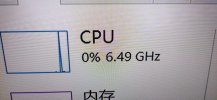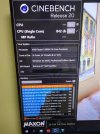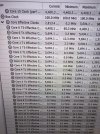kingsong
New Member
I'm glad to share with you what I found by chance. I bought a 5950x and just used it for two days. Suddenly, I found that the CPU speed of the task manager has changed to 6.2GHz, but I set the full core lock of 4.6ghz and the core voltage of 1.2625v in the BIOS. Of course, I thought this was a system error, so I tested the cpuz and the displayed core frequency is still 4.6ghz, When I was ready to ignore this error, something surprised me happened. Except that the cpuz running points had not changed, including cinebench R15, R20, R23, chess test and super PI test, the performance was improved by 20% - 40% compared with before. Of course, the power consumption was also increased to around 330W, which was incredible, Because I didn't believe that such a low voltage could stably operate at such a high frequency, I conducted repeated tests. I was almost sure that the performance was improved a lot when no detection software could normally display the frequency of 6.2GHz. I told several leaders in the science and technology circle about this, They also said that it is almost impossible to increase the core frequency to 6GHz in the case of air cooling. The only thing I found to prove is that under the sensor stacus of hwinfo64 v7.11-4545, the Core Effective clock can accelerate from the previous 4.6Ghz to 6.2GHz, and all 32 lines. Usually, HWiNFO64 monitors the core real-time frequency according to the core clock, However, on my computer, the Core Clock is invariable and stable at 4.6ghz. I can't see any frequency fluctuation, but I can observe the dynamic change of the Core Effective Clock accelerating from 10MHz to 6000Mhz, which is consistent with the CPU load. This is what I have found so far.



















